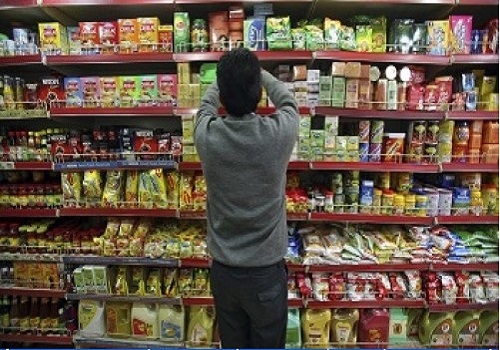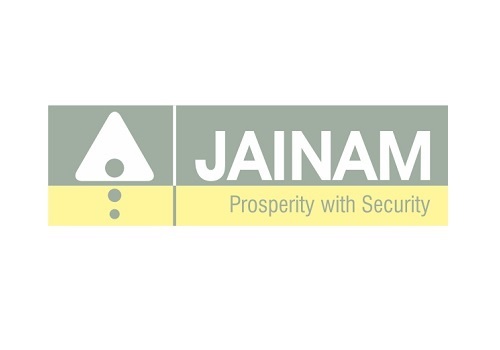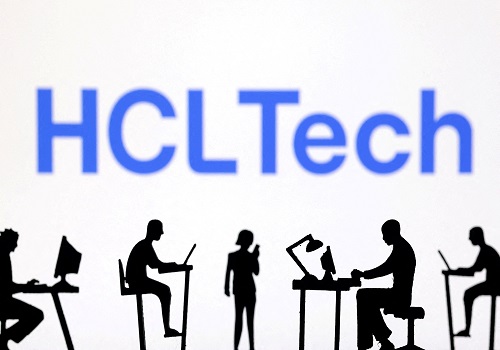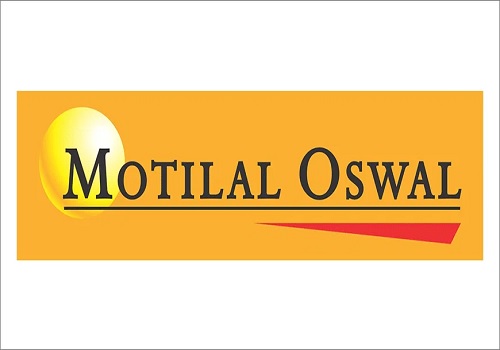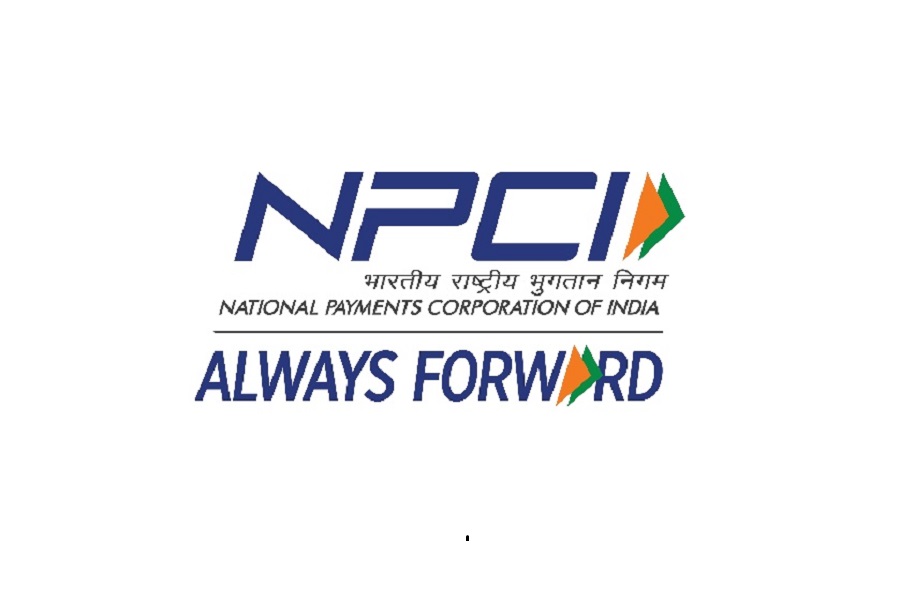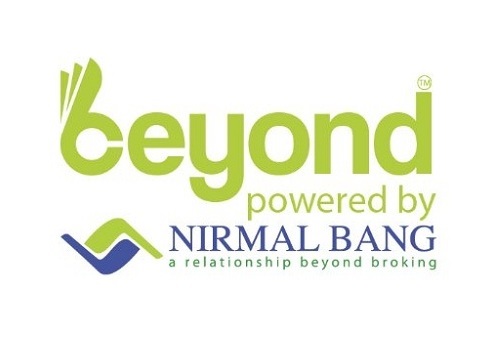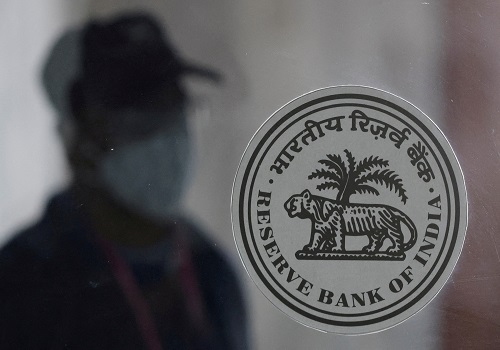Utkarsh Small Finance Bank coming up with IPO to raise upto Rs 543.47 crore

Utkarsh Small Finance Bank
- Utkarsh Small Finance Bank is coming out with a 100% book building; initial public offering (IPO) of 21,73,91,304 shares of Rs 10 each in a price band Rs 23-25 per equity share.
- Not less than 75% of the issue will be allocated to Qualified Institutional Buyers (QIBs), including 5% to the mutual funds. Further, not less than 15% of the issue will be available for the non-institutional bidders and the remaining 10% for the retail investors.
- The issue will open for subscription on July 12, 2023 and will close on July 14, 2023.
- The shares will be listed on BSE as well as NSE.
- The face value of the share is Rs 10 and is priced 2.30 times of its face value on the lower side and 2.50 times on the higher side.
- Book running lead managers to the issue are ICICI Securities and Kotak Mahindra Capital Company.
- Compliance Officer for the issue is Muthiah Ganapathy.
Profile of the bank
It is a small finance bank (SFB) in India and recorded the third fastest Gross Loan Portfolio growth between Fiscal 2019 and Fiscal 2023 among SFBs with Gross Loan Portfolio of more than Rs 60 billion. Its Promoter, Utkarsh CoreInvest, commenced its operations as a NBFC in Fiscal 2010 and was focused on providing microfinance to unserved and underserved segments and in particular in the states of Uttar Pradesh and Bihar. The bank has its headquarters located in Varanasi, Uttar Pradesh and have over the years expanded its SFB operations strategically in States where it has been able to leverage the prior microfinance experience of Utkarsh CoreInvest.
On October 7, 2015, Utkarsh CoreInvest received the RBI In-Principle Approval to establish an SFB, following which it incorporated Utkarsh Small Finance Bank as a wholly-owned subsidiary on April 30, 2016. Subsequent to its obtaining the RBI Licence on November 25, 2016, to establish and carry-on business as an SFB, Utkarsh CoreInvest transferred its business of providing microfinance, as a going concern to its Bank, which commenced its operations from January 23, 2017. It was included in the second schedule to the RBI Act as a scheduled commercial bank pursuant to a notification dated October 4, 2017 issued by the RBI and published in the Gazette of India (Part III - Section 4) dated November 7, 2017.
The banks operations are spread across India and is presents in 26 States and Union Territories with 830 Banking Outlets and 15,424 employees, as of March 31, 2023. As of March 31, 2023, 27.35% of its Banking Outlets were located in Unbanked Rural Centres (URCs) as against the regulatory requirement of 25% of banking outlets of SFBs to be located in URCs. Its operations are focused in rural and semi-urban areas and as of March 31, 2023, it had 3.59 million customers (both deposit and credit) majorly located in rural and semi-urban areas primarily in the states of Bihar and Uttar Pradesh that, in Fiscal 2022, are among the states with the best asset quality but with low and moderate credit penetration. As of March 31, 2023, these states constituted 30.88% and 25.98% of its total Gross Loan Portfolio (based on location of the Banking Outlet), respectively. It is also focused on further strengthening its presence in newer geographies in addition to existing states where it operate by entering into arrangements with business correspondents (BCs) and direct selling agents (DSAs) and as of March 31, 2023, it had tie-ups with 13 BCs to source customers and 321 DSAs to grow its asset portfolio.
Proceed is being used for:
- Augmenting Tier - 1 capital base to meet future capital requirements.
- Meeting the expenses in relation to the Issue.
Industry overview
While banks are the primary institutions for banking in India, retail loan portfolio forms only 31% of the overall banking credit. Other focus areas for banks are wholesale lending to large corporates, credit to services sector and agriculture sector. Lower presence of banks in the retail space has created an opportunity for NBFCs and NBFCMFIs to penetrate the segment which has also led to greater financial inclusion as NBFCs and NBFC-MFIs also cater to riskier customer profiles with lower income. Compared to that of banks, NBFC credit to retail segment forms more than 60% of its portfolio and NBFC-MFI exclusively into retail indicating larger focus on retail customers. In order to promote financial inclusion, the Indian banking industry has seen several changes in recent years. NBFCs, such as Bandhan and IDFC received permission to set up universal banks. Also, a few microfinance companies, local area banks and an NBFC as well as one urban co-operative bank have received permission to set up small finance banks (SFBs). As of March 2023, the RBI has awarded SFB licences to 12 players keeping in with the government’s focus on financial inclusion and inclusive banking.
Greater use of technology is enabling lenders to provide customised products, that too at much lower turnaround time. Multiple data points are available for lenders that is facilitating quick decision making. In fact, they can take lending decisions within minutes using data-driven automated models. These models would help in supply of credit to small business units and the unorganised sector at low cost. Technology also helps these players expand their reach to under penetrated population in remote areas at a lower operating cost. CASA and other retail deposits are a cheap source of funds for SFBs, which help them expand their product portfolio. They can provide lower rates in the market to compete with NBFCs. With SFBs expanding in the underserved regions further, their deposit base is expected to further widen. The CASA deposits for SFBs is estimated to have grown at 66% CAGR from Fiscal 2018 to Fiscal 2023. This will give them an advantage over NBFCs and help expand their asset book. SFBs’ target audience is the low-income segment, who can be wooed with a sachet level product suite. Unlike NBFCs, which expand horizontally with a special focus product, SFBs have a chance to expand vertically and horizontally. This will enable them to have a good mix of medium and low-value customers. Also, rural and microfinance borrowers have low credit penetration and migrate less from one player to another. This will enable SFBs to build longer and loyal customer relationships.
Pros and strengths
Sound understanding of microfinance segment and presence in rural and semi-urban area: Utkarsh CoreInvest, originally commenced operations as a NBFC in Fiscal 2010 and later converted to a NBFC – MFI. Utkarsh CoreInvest has a history of serving customers in the microfinance segment with a particular focus on financial inclusion for unserved and underserved customer segments in rural/ semi-urban areas of Uttar Pradesh, Bihar, Jharkhand, Madhya Pradesh, Chhattisgarh and Uttarakhand. The erstwhile business of Utkarsh CoreInvest was primarily based on the joint liability group-lending model for providing collateral-free, small ticket-size loans to economically active poor women for income generation purposes. Utkarsh CoreInvest also offered micro enterprise loans to the economically poor segments. Following the commencement of its SFB operations, it has further strengthened its engagement with borrowers by continuing to focus on microfinance and by diversifying its product offerings to include savings accounts, deposit products and other loan products. Its total customers (both deposit and credit) have been continuously increasing and its customer base grew from 2.90 million customers as of March 31, 2021 to 3.14 million customers as of March 31, 2022 and further to 3.59 million customers as of March 31, 2023. As of March 31, 2021, 2022 and 2023, it generated 68.47%, 63.23% and 56.42% of its Gross Loan Portfolio from rural and semi-urban areas, respectively.
Growing deposits with focus on retail deposits: The bank offers a variety of demand and time deposit products along with other services through which its customers can address their savings and transactional needs. Its product suite includes a range of deposit products including saving accounts, salary accounts, current accounts, recurring and fixed deposits (with callable and non-callable options) and locker facilities. It offers diversified liabilities products at competitive rates targeted primarily at retail customers from all segments led by senior citizens, middle-class individuals and self-employed and salaried individuals. Its total deposits have grown from Rs 75,075.68 million as of March 31, 2021, to Rs 100,741.83 million as of March 31, 2022, and further to Rs 137,101.40 million as of March 31, 2023, while its deposit-only customers have increased from 0.38 million as of March 31, 2021, to 0.65 million as of March 31, 2022 and further to 0.86 million as of March 31, 2023. The percentage of its non-callable deposit to its total deposits was 35.13%, 33.16% and 39.28%, as of March 31, 2021, 2022 and 2023, respectively, while the average tenor of its term deposits was 1.75 years, 1.96 years, and 2.07 years as of March 31, 2021, 2022 and 2023, respectively. The average ticket size of its deposits based on number of deposit accounts was Rs 85,163, Rs 67,303 and Rs 67,139, as of March 31, 2021, 2022 and 2023, respectively.
Diversified distribution network with significant cross-selling opportunities: The bank has an extensive physical network of Banking Outlets and as of March 31, 2023, it had 830 Banking Outlets across 26 States and Union Territories covering 253 districts in India of which 522 Banking Outlets were located in rural and semi-urban areas (combined). Its network of Banking Outlets allows it to service its existing customers and attract new customers as a result of relationships cultivated through proximity and frequent interaction by its employees. Its network aims to reduce reliance on a particular region in India and allows it to replicate best practices developed in one region to other regions. Besides its Banking Outlets, its multi-channel delivery includes ATMs, micro-ATMs, mobile and internet banking, corporate internet banking services. As of March 31, 2023, it had a network of 280 on-site and seven off-site ATMs. As of March 31, 2023, it has also set-up 546 micro-ATMs. To facilitate ease of transaction for account holders, it offers a range of transaction and payment channels that include domestic and international ATM cum debit cards (RuPay and Mastercard), payment gateways, integrated bill payment system facility, money transfer service scheme and door-step banking services.
Focus on risk management and effective operations: Risk management is at the core of the banks operations, and it has over the years focused on robust and comprehensive credit assessment and risk management framework. Its framework identifies monitors and manages risks inherent in its operations and in particular manages credit, market, liquidity, IT and operational risks. Its risk function has a system of measuring, monitoring and implementing risk parameters including real time monitoring of regulatory updates and trends in national and international markets, framing guidelines, policies and products in accordance with industry practices, defining admissible portfolio at risk for each product, an early warning system to provide signals for sector performance and limits on extending funds to a particular industry. For retail loans, NPAs are tracked based on how a particular employee sources such loan. If delinquency levels are high for a particular employee, an enquiry is initiated. Credit norms are made stringent for Banking Outlets that show higher delinquencies. Its credit risk policy outlines the broad framework within which policies and products are to be conceptualized.
Risks and concerns
Deposits depend on a limited number of customers: The bank is dependent on a limited number of customers for a substantial portion of its deposits. Its customers may reduce or remove their deposits from the Bank, with or without cause or notice, at any time. Reduction or loss of such deposits expose it to an increasing funding risk, which could in turn adversely affect its financial performance and results of operations. A reduction in the services it performs for such customers or the loss of such major customers could result in a significant reduction of its deposits portfolio. Factors that may result in a loss of a customer include its inability to offer competitive interest rates, service performance, loss of its reputation, reduction in budgets due to macroeconomic factors or otherwise and shift in policies and political or economic factors. There is significant competition for the services it provides and it is typically not an exclusive service provider to its large customers. These factors may not be under its control or predicted with any degree of certainty. Significant pricing or margin pressure exerted by its customers could also adversely affect its business, financial condition, results of operations and cash flows. If any of its customers reduce or remove their deposit accounts from its Bank, its deposits portfolio, funding sources, financial condition, results of operations, and cash flows could be materially and adversely affected.
Significantly dependent on micro-banking segment: The bank's loan portfolio contains significant advances towards its micro-banking segment, particularly through micro-banking loans. As of March 31, 2021, 2022 and 2023, advances in its micro-banking segment was Rs 68,993.84 million, Rs 80,024.07 million and Rs 92,155.82 million respectively and accounted for 81.98%, 75.28% and 66.03%, respectively, of its total Gross Loan Portfolio. Consequently, its financial performance significantly depends on its micro-banking segment, which in turn depends on various factors, including the ability of its borrowers to repay their loan, the results of operations of the businesses of such borrowers, changes in regulations and policies by the governments including demonetization, natural disasters, calamities, political and social risks, including any adverse publicity or litigation relating to the microfinance sector, public criticism of the microfinance sector and religious beliefs relating to loans and interest payments. These and other factors could lead to an increase in impairment losses and adversely affect its business and results of operations. Additionally, any decline in sales of, or in demand for its micro-banking products could adversely affect its business, results of operations, financial condition and cash flows.
Face competition: The success of the banks banking operations depends on a number of factors, including the demand for its services and its ability to compete with other banks and financial institutions effectively. The banking and financing sector in India is highly competitive and it faces competition in all its principal areas of business. It faces its most significant organized competition from other SFBs, NBFCs, microfinance institutions and cooperative banks which have significant presence in rural areas, public sector banks, private sector banks, housing finance companies and other financial services companies in India. There are multiple players in the microfinance sector with varied organisational structures. Loans in the microfinance sector are provided by banks, small finance banks, non-banking finance company-microfinance institutions (NBFC-MFIs), other non-banking finance companies, and non-profit organisations. Banks provide loans under the self-help group model. However, they also give microfinance loans directly or through business correspondents to meet their priority-sector lending targets. In addition, many of its potential customers in economically weaker segments do not have access to any form of organized institutional lending, and rely on loans from informal sources, especially moneylenders, landlords, local shopkeepers and traders, at higher interest rates.
Depend on brand recognition: The bank has invested in promoting the “Utkarsh” brand, and it expects to continue to invest in increasing its brand awareness. Any damage to the brand “Utkarsh” or to its reputation could substantially impair its ability to maintain or grow its business, or could have a material adverse effect on its overall business, financial condition, results of operations and cash flows. If the company fails to maintain this brand recognition with its existing and target customers due to any issues with its product offerings, a deterioration in service quality, or otherwise, or if any premium in value attributed to its business or to the brands under which its services are provided declines, market perception and customer acceptance of its brands may also decline. Reputational risk, or the risk to its business, earnings and capital from negative publicity, is inherent in its business. If it experiences any negative publicity, it could adversely affect its brand and ability to attract and retain customers.
Outlook
Incorporated in 2016, Utkarsh Small Finance Bank is an SFB (Small Finance Bank) in India and recorded the second fastest AUM growth in the years Fiscal 2019 and Fiscal 2022 among SFBs with AUM of more than Rs. 50 billion. The bank extends its facilities to individuals and businesses to assist them with their financial requirements. Customers of Utkarsh Small Finance Bank can avail of features like Top-up/Balance Transfer facility, Hassle-free processing with Easy Documentation Process, Avail loan up to Rs 50 crore and Tenure up to 30 years, and efficient eligibility for salaried and self-employed individuals. It has a diverse product portfolio and microfinance remain a focused business segment. Its operations are spread across India and are present in 26 States and Union Territories with 830 Banking Outlets and 15,424 employees, as of March 31, 2023. As of March 31, 2023, 27.35% of its Banking Outlets were located in Unbanked Rural Centres (URCs) as against the regulatory requirement of 25% of banking outlets of SFBs to be located in URCs. On the concern side, It has incurred substantial costs to expand its range of products and services and it cannot assure that such products and services will be successful, whether due to factors within or outside of its control, such as general economic conditions, a failure to understand customer demand and market requirements or management focus on these new products.
The bank is coming out with an IPO of 21,73,91,304 equity shares of face value of Rs 10 each. The issue has been offered in a price band of Rs 23-25 per equity share. The aggregate size of the offer is around Rs 500.00 crore to Rs 543.48 crore based on lower and upper price band respectively. On the financial front, total income increased by 37.89% from Rs 20,336.46 million in Fiscal 2022 to Rs 28,042.86 million in Fiscal 2023. The bank's profit for the year was Rs 4,045.02 million in Fiscal 2023 as compared to Rs 614.62 million in Fiscal 2022. Meanwhile, the bank intends to leverage its wide base of existing customers in the unserved and underserved segments by developing a range of asset products based on their vintage and credit worthiness to create sustainable livelihood. Therefore, it intends to extend the offering from JLG loans to individual loans to micro enterprise loans, affordable housing loans and other new products. It will also seek to increase visibility and penetration of its other assets products to achieve a well-diversified lending book along with a continued focus on financial inclusion.
